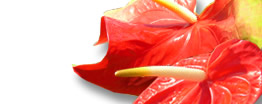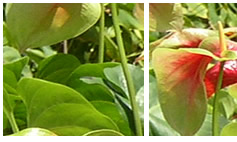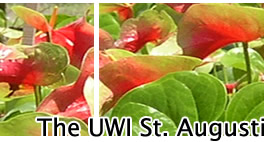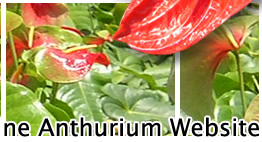 |
 |
||||
 |
 |
 |
|||
|
|
History of the Anthurium Industry Introduction of anthurium cultivation Anthurium evolved as an under storey, epiphytic species in the tropical forests of Tropical, Central and South America and the Caribbean. Although many species of Anthurium are indigenous to the Caribbean, Anthurium andraeanum Linden Ex André, the most extensively cultivated species of anthurium is an introduced species. For more information refer to the section on ‘genetic resources’
These introductions were extensively grown under cocoa and citrus during the 20th century for export and continue to be grown, albeit at a lower level, for the local market. During the period 1945- 1970, ‘Local Pink’ anthurium cultivation in Trinidad was at its peak with some 80- 121 hectares planted under tree crops (mainly cocoa and citrus). The largest farm in Trinidad was the Naranjo Estate in the Aripo Valley with approximately 20 hectares under cultivation, and production of 6000 saleable cut-flowers per week. Emergence of modern systems of cultivation During the l970s, anthurium began gaining popularity as a cut-flower in Holland and Hawaii, and in the late 1980s this captured the interest of some regional enthusiasts especially in Jamaica. Exotic Hawaiian, Dutch and other European anthurium cultivars were introduced and cultivated in shade houses in Jamaica and Trinidad and Tobago, under high management, primarily for export. The rise and fall of the industry The exotic anthurium industry in the Caribbean was based on mainly imported Dutch cultivars, and the majority of cut-flowers produced in Jamaica and Trinidad and Tobago was exported to the North American market. Jamaica became the largest exporter into the US in the 1980’s, which coincided with the decline of the anthurium industry in Hawaii triggered by the bacterial blight disease caused by Xanthomonas axonopodis pv dieffenbachiae (previously Xanthomonas campestris pv. dieffenbachiae). Just as Jamaica was flourishing, it too was hit by bacterial blight disease which allowed and Trinidad and Tobago to expand its production soon making Trinidad and Tobago the largest supplier to the USA through the late 1980s and 1990s. However, commercial production in Trinidad started to decline by the mid 1990s, again hit by bacterial blight and bacterial leaf spot (causal organism: Acidovorax anthurii) diseases. Most Dutch cultivars grown in the region, at that time, were highly susceptible to the two bacterial diseases and the burrowing nematode (Radophilis similis). |
© 2004 - The University of The West Indies. All rights reserved. Disclaimer | Privacy Statement Telephone: (868) 662-2002 Fax: (868) 663-9684 |
|